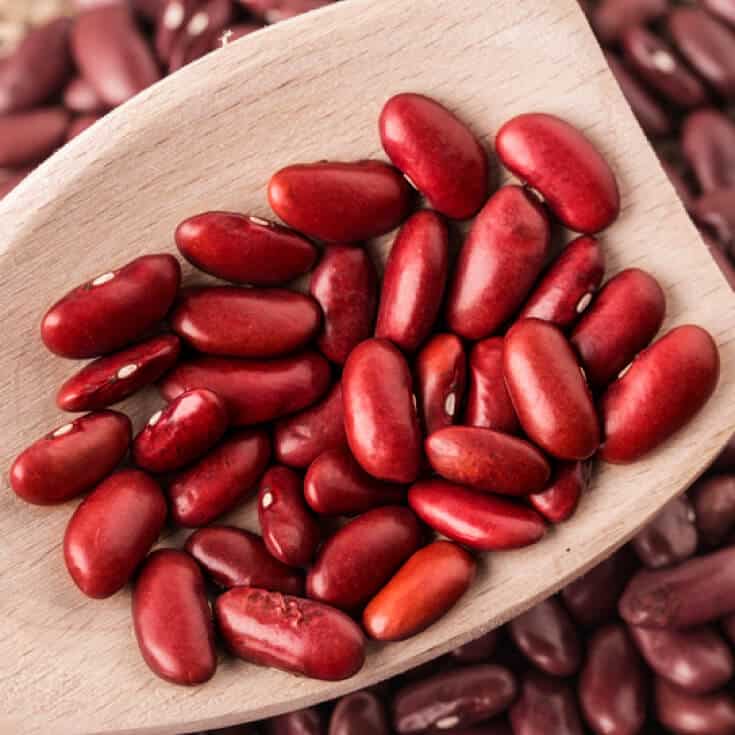I think that guy is talking shit about all beansWhen you say beans are you also referring to kidney beans?
General BIG WIN. Instant Pot Chili
- Thread starter Passive Jay
- Start date
-
- Tags
- win
Welcome to our Community
Wanting to join the rest of our members? Feel free to Sign Up today.
Sign up
Oh then we got ourselves a little problem here, don't we?I think that guy is talking shit about all beans
To bean, or not to bean. When you’re making a pot of chili, that is the question. And depending on whether or not you’re from Texas, there is a very definitive answer.Wait
No beans?
What kinda fucking chilli is that??
I'd rather eat dust in purgatory!
If you’re from Texas: NO.
If you’re from elsewhere: Maybe.
We here at Southern Living straddle both sides of the fence on this red-hot (ahem) issue. We’ve published recipes for all types of chili, from a chunky, long-simmered beef chili, to quick-fix chicken chili using a store-bought rotisserie bird—and white beans.
While the origin of chili in the United States is debated among food historians, many think it was popularized in San Antonio in the 1900s by the Chili Queens, a group of women who sold a spicy meat stew around the city’s Military Plaza. According to theInternational Chili Society, which runs several world-famous chili competitions: “The Queens, who were for the most part Mexican, made their chili at home and then loaded it onto colorful little chili wagons, on which they transported it to the plaza, along with pots, crockery, and all the other gear necessary to feed the nineteenth-century night people. They build mesquite fires on the square to keep the chili warm, lighted the wagons with colored lanterns, and squatted on the ground beside the cart, dishing out chili to customers who sat on wooden stools to eat the delightful and fiery stew.”
In her cookbook United Tastes of Texas, author Jessica Dupuy writes that chili does have strong ties to Texas, even though the dish was created long before: “While many Texans might choke on a spoonful of their own bowl of red at the notion, the origins of chili really come from south of the border, in South America. The term 'chili' is short for ‘chili con carne,’ which translates from Spanish as chilies with meat. It’s s simple phrase that most people misinterpret placing more importance on the meat, rather than the chilies. But without chilies, and their integral role in the vast majority of Mexican food, our modern day chili would be little more than a boring bowl of sautéed meat.”
As chili parlors spread like wildfire across the country in the mid-1900s, the dish took on many different forms, including some with beans. Today, chili is considered a regional dish—served over spaghetti in Ohio, spooned onto Coney-style hot dogs in Michigian, and made with green chiles and pork in New Mexico, to name a few.
The ICS defines traditional red and green chili as “any kind of meat or combination of meats, cooked with red chili peppers, various spices and other ingredients, with the exception of beans and pasta which are strictly forbidden. No garnish is allowed.” If that sounds a bit uptight, there is the ICS’s Homestyle Chili competition which defines chili as: “the cook's favorite combination of ingredients resulting in a dish seasoned with chili peppers and spices.” Bean lovers, go crazy.
Whether you fall in the beans or no beans camp, chili is one of the most satisfying ways to feed a hungry crowd.
I am.I think that guy is talking shit about all beans
Only if you add beans.Oh then we got ourselves a little problem here, don't we?
Sorry, but bean lovers might've been able to pressure the Texas chili cook off to finally allow bean-in recipes a few years ago, but I'm not buying into that crap. Words have meanings, & chili does not have beans.
I can't imagine chili without kidney beans. Why don't you like them?Only if you add beans.
When you have chili without beans, you may never go back.I can't imagine chili without kidney beans. Why don't you like them?
Hmm, you have me intrigued. So what, if anything do you substitute for beans? I am supposed to make a batch tomorrow.When you have chili without beans, you may never go back.
smdh
Don't give me no sass about my beans! Seriously, what do you substitute the beans with?smdh
there are no beans in chili, if you want to add kidney beans to chili you are then eating soupWhen you say beans are you also referring to kidney beans?
nothing, you enjoy one of God's greatest gifts to the world, chiliWhen you say beans are you also referring to kidney beans?
There is no substitution for the beans. Simply make the chili without adding beans. I like to either reduce my batch, or add masa to thicken it.Hmm, you have me intrigued. So what, if anything do you substitute for beans? I am supposed to make a batch tomorrow.
Well, technically chili is cooked with solid foods, in its own juices and gravy so it is a stew.there are no beans in chili, if you want to add kidney beans to chili you are then eating soup
I will probably give this a try, because I am sure it still tastes great but tomorrow I am using kidney beans.There is no substitution for the beans. Simply make the chili without adding beans. I like to either reduce my batch, or add masa to thicken it.
Whenever you decide to try it, you will be glad you did. The vast majority of Texas chili has no beans, and many consider Texas to have the best chili in the world. When you remove the beans, you simply have to factor in reduction or thickening, but otherwise it is the same process.I will probably give this a try, because I am sure it still tastes great but tomorrow I am using kidney beans.
Yeah good point, Texas chili is pretty famous. Is that what Chili con carn is?Whenever you decide to try it, you will be glad you did. The vast majority of Texas chili has no beans, and many consider Texas to have the best chili in the world. When you remove the beans, you simply have to factor in reduction or thickening, but otherwise it is the same process.
Chili con Carne and traditional texas chili are both the same.Yeah good point, Texas chili is pretty famous. Is that what Chili con carn is?







